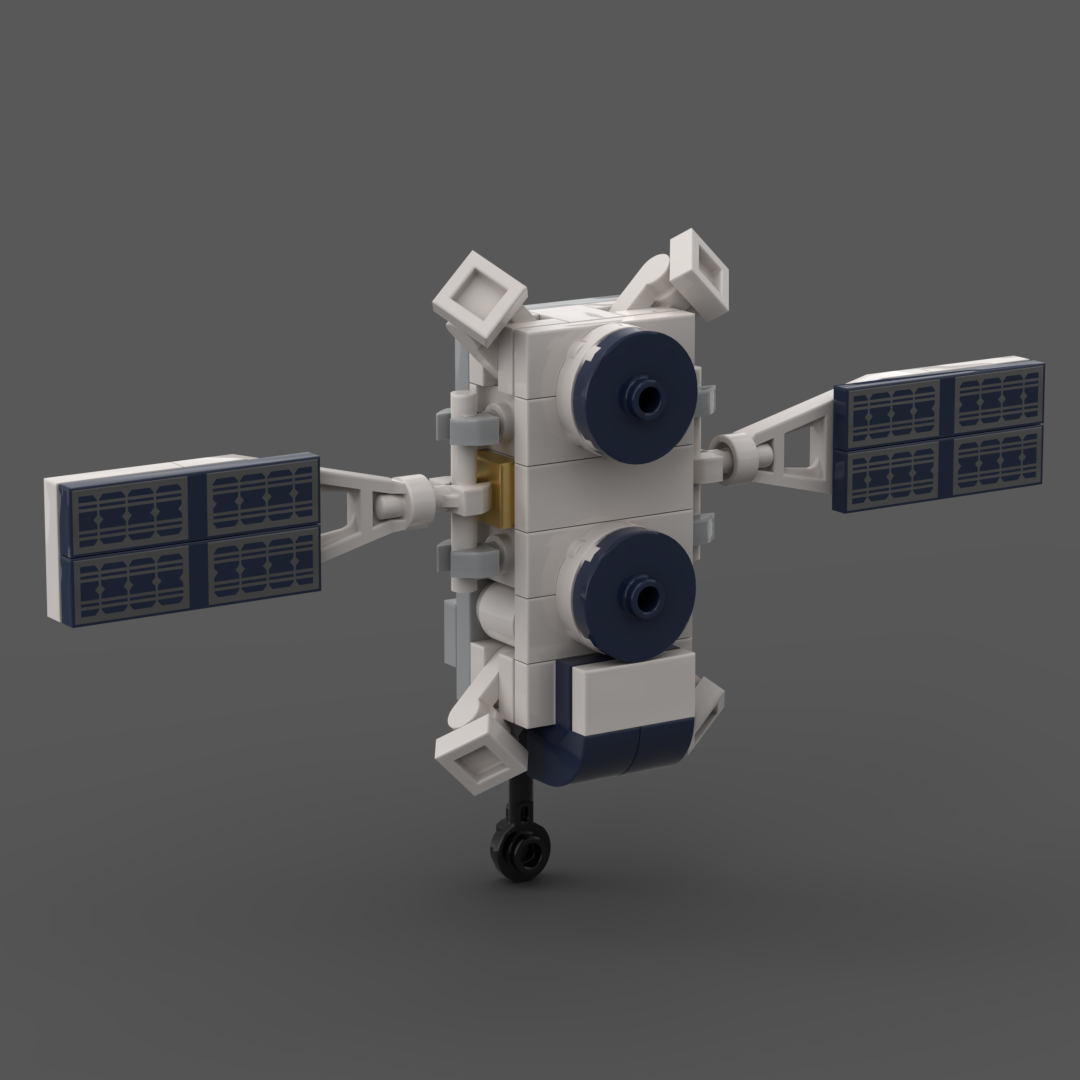
LEGO Designer:
Dan Fallon (phreaddee)
Designed:
March 2022
Categories:
All, Earth Orbit Telescopes, Probes and Satellites, Space Agency - NASA
Launch Vehicle Details
Stages:
Length:
Diameter:
Mass at Launch:
Low Earth Orbit Capacity:
Total Thrust:
Apogee:
Class:
The Compton Gamma Ray Observatory (CGRO) was a space observatory detecting photons with energies from 20 keV to 30 GeV, in Earth orbit from 1991 to 2000. The observatory featured four main telescopes in one spacecraft, covering X-rays and gamma rays, including various specialized sub-instruments and detectors. Following 14 years of effort, the observatory was launched from Space Shuttle Atlantis during STS-37 on April 5, 1991, and operated until its deorbit on June 4, 2000. It was deployed in low Earth orbit at 450 km (280 mi) to avoid the Van Allen radiation belt. It was the heaviest astrophysical payload ever flown at that time at 17,000 kilograms (37,000 lb).
The CGRO was part of NASA’s “Great Observatories” series, along with the Hubble Space Telescope, the Chandra X-ray Observatory, and the Spitzer Space Telescope. It was the second of the series to be launched into space, following the Hubble Space Telescope. The CGRO was named after Arthur Compton, an American physicist and former chancellor of Washington University in St. Louis who received the Nobel prize for work involved with gamma-ray physics. CGRO was built by TRW (now Northrop Grumman Aerospace Systems) in Redondo Beach, California. CGRO was an international collaboration and additional contributions came from the European Space Agency and various universities, as well as the U.S. Naval Research Laboratory.
It was deployed to an altitude of 450 km on April 7, 1991 when it was first launched. Over time the orbit decayed and needed re-boosting to prevent atmospheric entry sooner than desired. It was reboosted twice using onboard propellant: in October 1993 from 340 km to 450 km altitude, and in June 1997 from 440 km to 515 km altitude, to potentially extend operation to 2007.
After one of its three gyroscopes failed in December 1999, the observatory was deliberately de-orbited. At the time, the observatory was still operational; however the failure of another gyroscope would have made de-orbiting much more difficult and dangerous. With some controversy, NASA decided in the interest of public safety that a controlled crash into an ocean was preferable to letting the craft come down on its own at random. It entered the Earth’s atmosphere on 4 June 2000, with the debris that did not burn up (“six 1,800-pound aluminum I-beams and parts made of titanium, including more than 5,000 bolts”) falling into the Pacific Ocean.
This de-orbit was NASA’s first intentional controlled de-orbit of a satellite.
Part count: 66 bricks, 26 lots.
| Unit | width | length | height |
|---|---|---|---|
| Studs | 3.9 | 17.4 | 10.5 |
| Inches | 1.2 | 5.5 | 3.3 |
| Centimetres | 3.1 | 13.9 | 8.4 |
No external URL provided.
Launch History information from space.skyrocket.de
Launch History information from space.skyrocket.de
Related Posts
None found